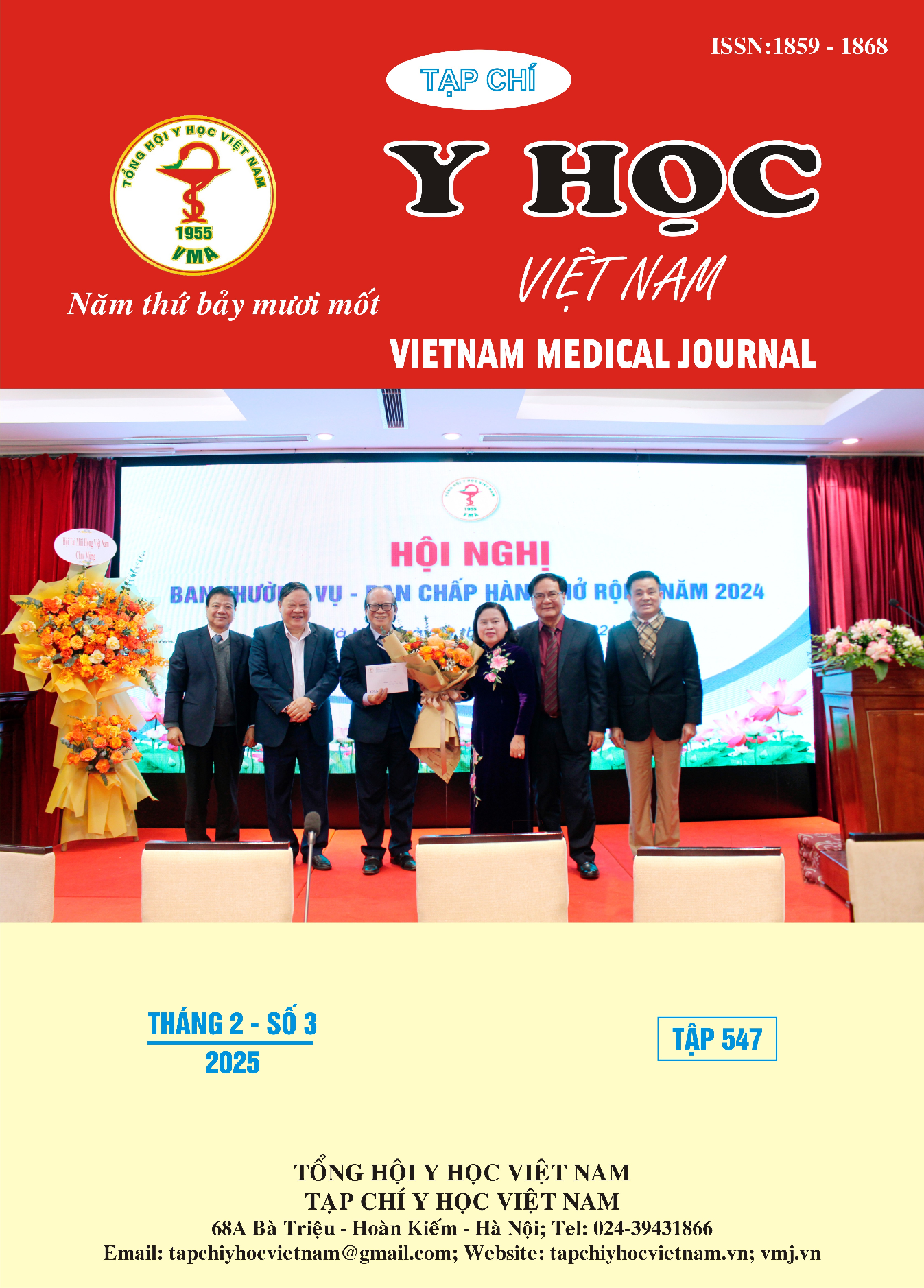AN ASSESSMENT OF THE PREVENTION OF CHEMOTHERAPY-INDUCED NEUTROPENIA AMONG CANCER PATIENTS AT THE NATIONAL HOSPITAL OF OBSTETRICS AND GYNECOLOGY
Main Article Content
Abstract
Objective: To examine the compliance with the standard guidelines of prescribing granulocyte – colony stimulating factor (G-CSF) for the prevention of chemotherapy-induced neutropenia. Methods: A cross-sectional study was conducted on cancer patients diagnosed and undergoing chemotherapy at the Oncological Gynecology Department, National Hospital of Obstetrics and Gynecology, from December 5, 2023, to February 29, 2024. Results: We enrolled 127 patients with a total of 609 cycles. Of which, the main proportion was ovarian cancer (57.5%) and gestational trophoblastic neoplasia patients (36.2%). 36.3% of the cycles had appropriate prophylaxis, 61.7% and 2.0% had over- and under- prophylaxis, respectively. In particular, the proportion of cycles with over-prophylaxis in the subsequent cycles was higher than in cycle 1 (64.1% compared to 54.6%) and mostly in ovarian cancer patients. Multivariate regression analysis results show that several factors have a statistically significant impact on the appropriate prophylaxis rate, such as type of cancer, recent surgical history, history of neutropenic complications, risk of febrile neutropenia of chemotherapy regimen, p<0.05. Conclusions: Prophylaxis for chemotherapy – induced neutropenia remained not compliant with the guidelines. Developing evidence-based guidelines and adapting to hospital practice conditions is a solution to to manage neutropenic events.
Article Details
Keywords
Chemotherapy - induced neutropenia, Neutropenia, Febrile neutropenia, Granulocyte-colony stimulating factor, Gynecological cancer
References
2. Bộ Y tế (2020), Hướng dẫn chẩn đoán và điều trị một số bệnh ung bướu: Nhà xuất bản Y học, Hà Nội. p. 26 - 34.
3. Lê Thái Vỹ Ly (2020) Khảo sát tình hình sử dụng thuốc trong dự phòng sốt hạ bạch cầu trung tính trên bệnh nhân ung thư vú điều trị bằng phác đồ AC và TC tại Bệnh viện Ung bướu Hà Nội, Khóa luận dược sĩ, Trường Đai học Dược Hà Nội, Hà Nội.
4. Trần Thị Thu Trang, Dương Khánh Linh, Đỗ Huyền Nga, Phùng Quang Toàn, Nguyễn Thị Hồng Hạnh, Nguyễn Thị Liên Hương, (2020), "Thực trạng dự phòng biến cố giảm bạch cầu trung tính do hoá trị liệu bằng thuốc tăng sinh bạch cầu (G-CSF) trên bệnh nhân ung thư vú và u Lympho tại bệnh viện K", Tạp chí Y học Việt Nam (Tổng hội Y học Việt Nam), (2), pp. 225-230.
5. Aapro M. S., Bohlius J., et al. (2011), "2010 update of EORTC guidelines for the use of granulocyte-colony stimulating factor to reduce the incidence of chemotherapy-induced febrile neutropenia in adult patients with lymphoproliferative disorders and solid tumours", Eur J Cancer, 47(1), pp. 8-32.
6. Cancer Institute NSW, Gestational trophoblastic disease high risk EMA-CO (etoposide methotrexate daCTINomycin CYCLOPHOSPHamide vinCRISTine), in EviQ. 2011.
7. National Comprehensive Cancer Network, Hematopoietic Growth Factors (Version 3.2024). 2024.
8. Norfolk & Norwich University Hospital (NHS), Guideline for the use of granulocyte-colony stimulating factor (G-CSF) in adult oncology and haematology patients 2017.
9. Smith T. J., Bohlke K., et al. (2015), "Recommendations for the Use of WBC Growth Factors: American Society of Clinical Oncology Clinical Practice Guideline Update", J Clin Oncol, 33(28), pp. 3199-212.
10. Waters G. E., Corrigan P., et al. (2013), "Comparison of pegfilgrastim prescribing practice to national guidelines at a university hospital outpatient oncology clinic", J Oncol Pract, 9(4), pp. 203-6.


